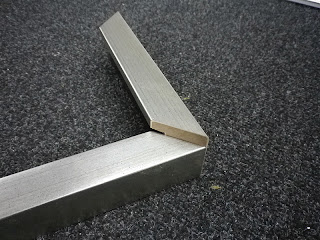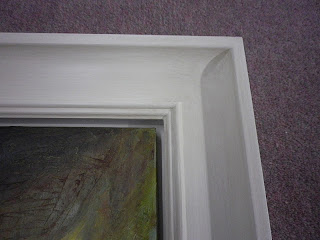Mountboards are available in many different colours, the standard sized sheet being around 32" x 44", over this size there are 'Jumbo' sheets which are around 40" x 60" although the choice of colours is quite limited. Over the Jumbo size the choice of colours becomes very limited, although you can get sheets up to 48" x 96" and 64" x 86"
For this mount (external size 54" x 38") there was no colour close in the Jumbo or larger sheet sizes, and this sand yellow was absolutely perfect for the art being framed, so we spliced two smaller sheets of mountboard together. This involves cutting two bevels where the join will be, butting the cuts together and fixing with tape, the join was then reinforced with mountboard. The join is very hard to see, especially as a picture of this size will rarely be viewed close up.















































